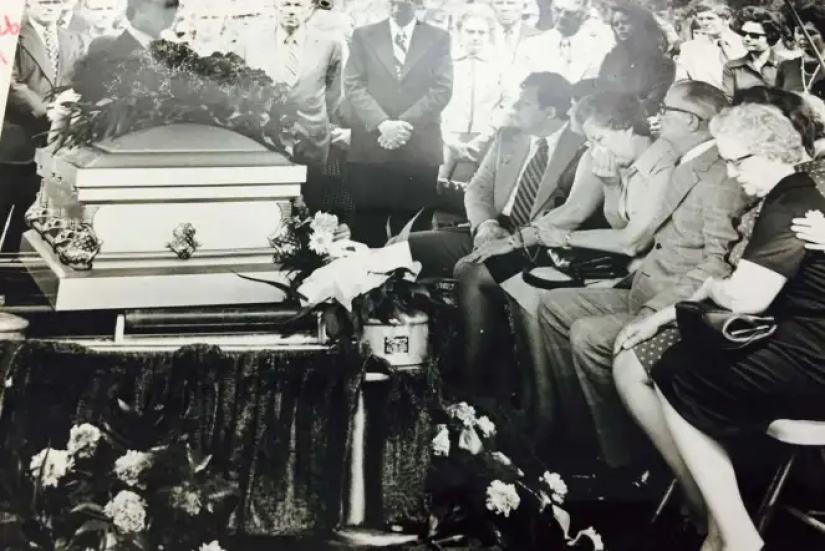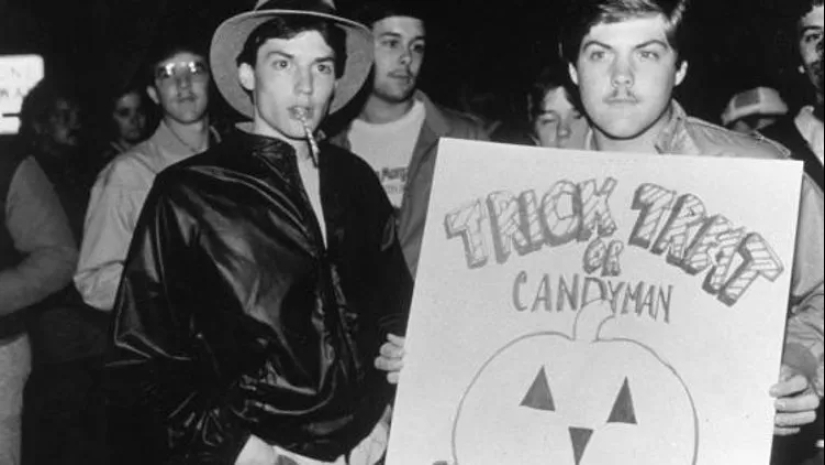The Shocking Story of Ronald O'Brien - The Man Who Killed Halloween
Categories: History
By Pictolic https://pictolic.com/article/the-shocking-story-of-ronald-o39brien-the-man-who-killed-halloween.htmlIn the USA, Halloween is unimaginable without sweets. Traditionally, children, dressed in scary costumes, go from house to house and "scare" people, for which they give them candy and cookies. Kids visit not only their friends' and neighbors' houses, but also complete strangers' houses. They boldly communicate with strangers and take treats from them, because they are sure that no one will harm them on holidays. This has always been the case, except for Halloween 1974, when something terrible and unbelievable happened.

On the evening of October 31, 1974, Deer Park Ronald O'Brien, a resident of an upscale Houston neighborhood, went out with his children, 8-year-old Timothy and 5-year-old Elizabeth, dressed in fancy dress to go around the nearby blocks and collect Halloween candy. On the street, they met friends and a noisy group went on a candy hunt.

Unfortunately, it suddenly started raining, so the event had to be closed after just half an hour. The sweet haul was modest, but it didn’t spoil anyone’s mood. Before going to bed, loving father Ronald allowed his son and daughter to indulge in sweets. The children predictably chose the largest candy from the bag. They were Pixie Stix lollipops in sugar coating, in the form of multi-colored sticks. Later, a sobbing Ronald told reporters:

The frightened father immediately called 911, and the boy was taken to the hospital. But there his condition continued to rapidly deteriorate, and an hour and a half later, Timothy O'Brien died. After that, the police raided the O'Briens' home. The cops confiscated food from the house, including candy that the children had collected.
Just a few hours later, experts announced that the child had been poisoned by a Pixie Stix candy that was laced with cyanide. They found the poison on the wrapper of the candy Timothy ate and on a second candy taken by 5-year-old Elizabeth. Luckily, the girl did not eat the treat. She was so tired that holiday evening that she fell asleep with the candy still in her hand.

The story of the deadly candies immediately hit the press, and soon it was known not only in Texas, but in other states as well. Parents feverishly searched their children's rooms, confiscating any sweets they found. Texas authorities urged adults to refuse any sweets given to them by strangers and to offer children only candies purchased in stores personally.
Ronald O'Brien, though heartbroken, was willing to help police with their investigation. His guidance helped investigators narrow down the suspects in the area where the treats were being collected. Sweets were also confiscated from other children who had been with the O'Briens that night. Five more poisoned Pixie Stix were found among them.

The father of the unfortunate Timothy was so involved in the investigation that he aroused the suspicions of the police. He remembered every door he and the children knocked on that evening, but he could not say where exactly they were treated to the poisoned lollipops. This was strange, since the Pixie Stix were the largest loot that evening.
They also decided to thoroughly check Ronald and found out something interesting. It turned out that the caring dad had recently taken out insurance on his children. Their lives were valued at $20,000 each, which at today's exchange rate is more than $100,000. Then he opened two more policies with another company, almost doubling that amount.

Further investigation revealed that Ronald had $100,000 in debt on loans, which would be about half a million dollars today. Mr. O'Brien was a family man but a very bad worker. He had held 21 jobs in the last 10 years. His wife, Dayneen, said they were constantly living in debt.
They had already fallen behind on their loan payments several times, and this worried her greatly. Deineen was also surprised by her husband's desire to insure the children for large sums and take on the additional burden of insurance premiums. On November 4, 1974, Ronald was arrested on suspicion of murdering his son. By this time, the police had gathered enough information to consider the man a poisoner.
Two months before Halloween, Ronald called his chemist friend and asked him where he could buy cyanide. He also wanted to know the lethal dose for humans. His friend asked why he needed this information, and O'Brien said he was just curious.

Ronald then tried to buy cyanide at a local hardware store. He told the salesman he was going to poison rats, but he didn't buy any. The store only had large 2.2 kg bags of the stuff, and Ronald said that was too much. The police were never able to figure out where the killer got the poison. But they did paint a full picture of the ill-fated evening.
On October 31, Ronald left his companions and went to a house alone. He returned with Pixie Stix candies. He probably hid them in someone else's yard beforehand. He gave one package to his children and three more to strangers. Thus, the charge of attempted murder of several people was added to the charge of murder.
The trial took place in May 1975. Ronald's family and friends testified as witnesses. The killer's wife's testimony was the most shocking. Deyneen recalled that immediately after the funeral, her husband began to figure out how they would spend the insurance money. He planned to pay off the loan and use the rest to go on vacation to Florida with his wife and daughter. At the time, the woman did not notice her husband's cynical behavior, since she was in shock over the death of her child.

The family's insurance agent told investigators that O'Brien contacted him a few hours after his son's death and began to clarify the procedure for obtaining insurance. Ronald's neighbors and former colleagues spoke positively of him, considering him a caring father and a good guy who was incapable of murder.
The lawyer tried to prove his client's innocence, but he had only one argument - the investigators never found the place where the killer got the poison. On June 3, 1975, after a 46-minute deliberation, O'Brien was found guilty of the premeditated murder of his own son and the attempted murder of others. He was sentenced to death, which in Texas was then carried out by electric chair.
The criminal waited for his sentence to be carried out for 9 long years. All this time, he categorically denied his guilt and filed one appeal after another. During this time, the state replaced the electric chair execution with a lethal injection. Before his death, Ronald was completely calm, and his last words were: "Since I have no guilt, I really have nothing to worry about."

On March 31, 1984, he was executed by injecting a lethal solution into his vein. It is no exaggeration to say that the entire country was waiting for his death. A huge crowd gathered in front of the prison gates where the execution took place. When Ronald's death was officially announced at 12:48 p.m., people rejoiced and threw candy into the air. Child killer O'Brien went down in history as the Candyman or "The Man Who Killed Halloween."
Recent articles

In the fall of 1972, Bill Yates traveled through the countryside in the vicinity of Tampa, Florida. At that time, he was studying ...

Severe cold weather does not give up its positions. We offer you to admire the magical photos of winter Europe, because snow and ...

Vladimir Lyubarov is an artist from the countryside who paints pictures of real life. But he brings amazing characters, birds, and ...